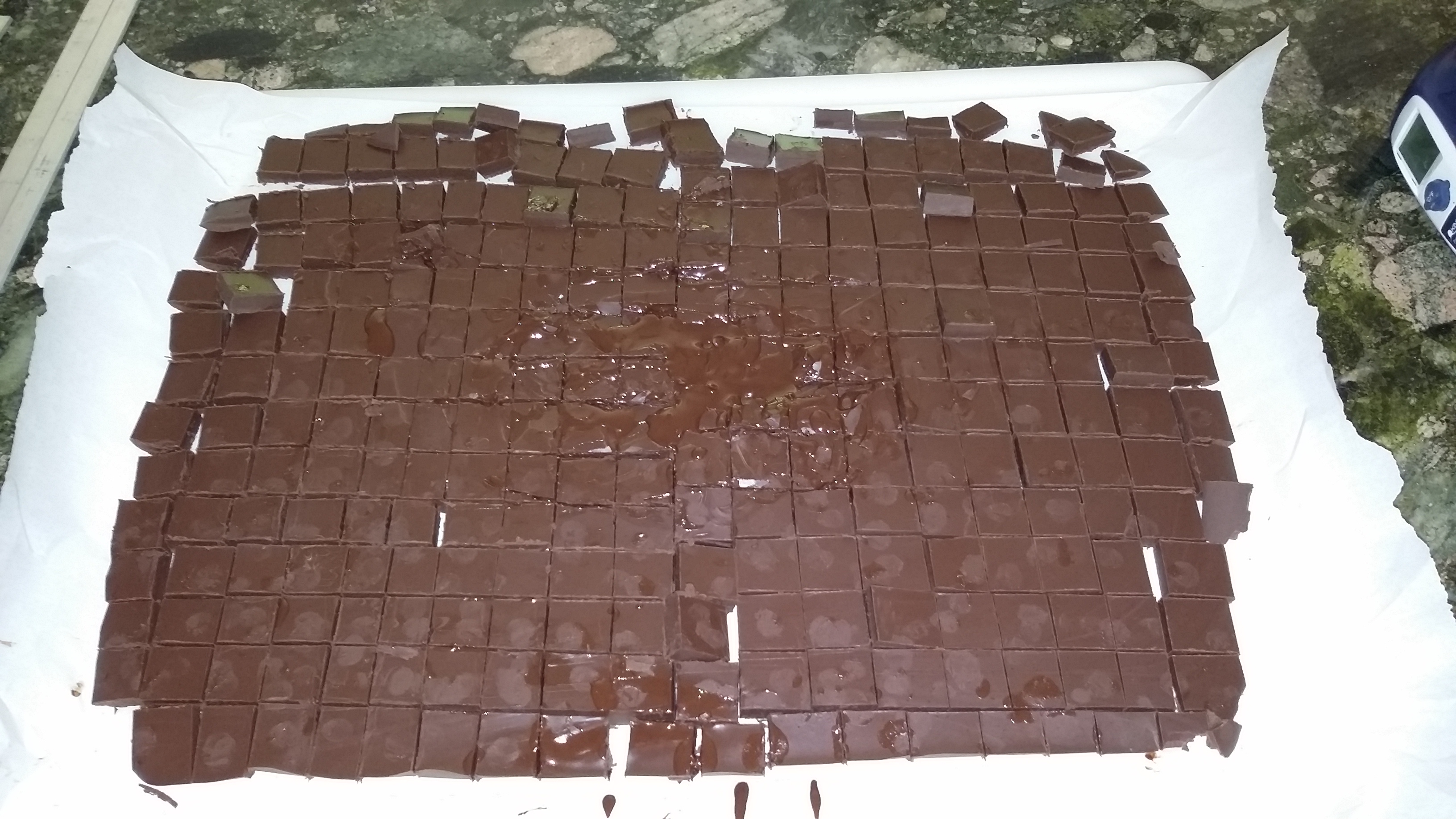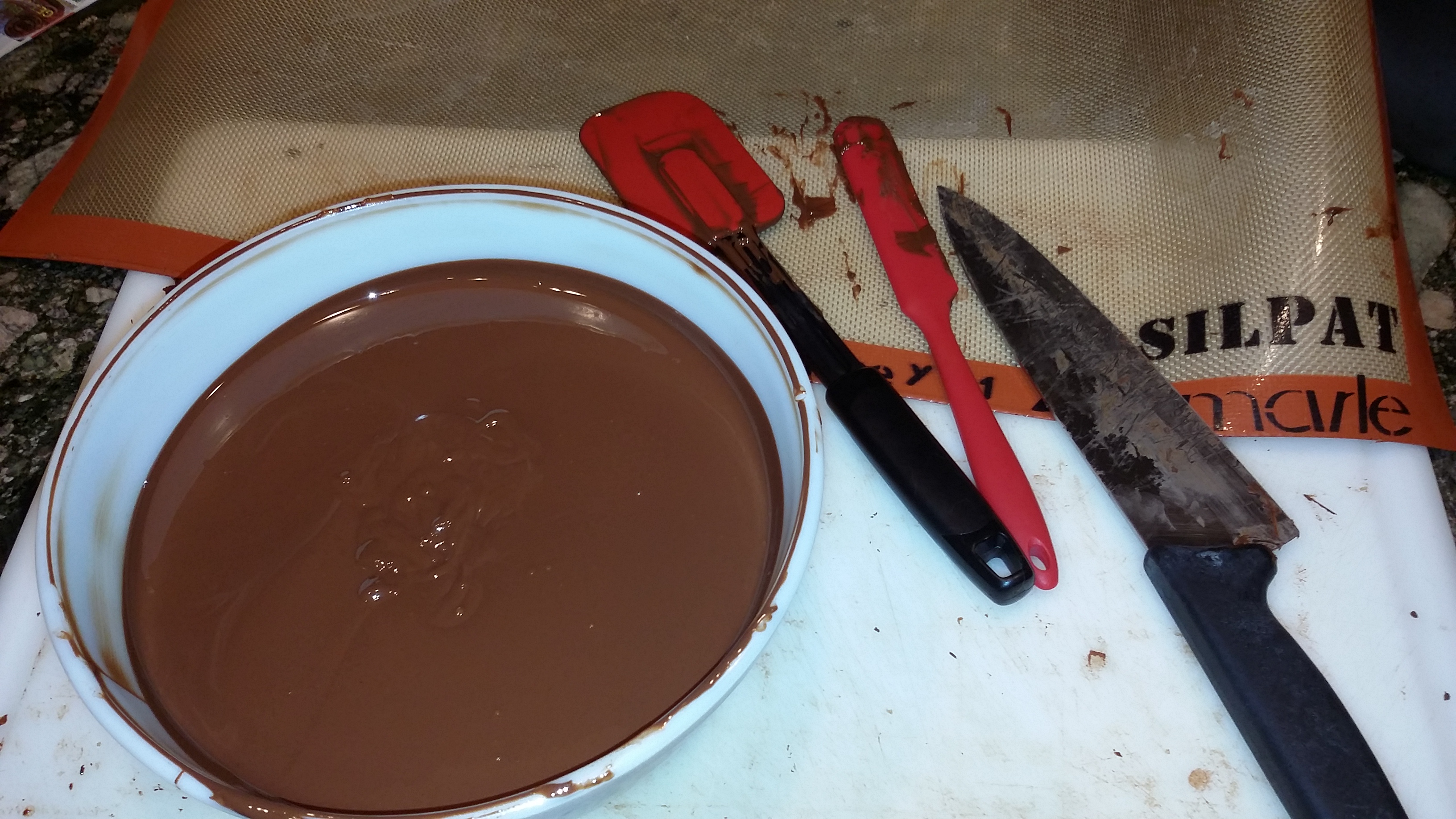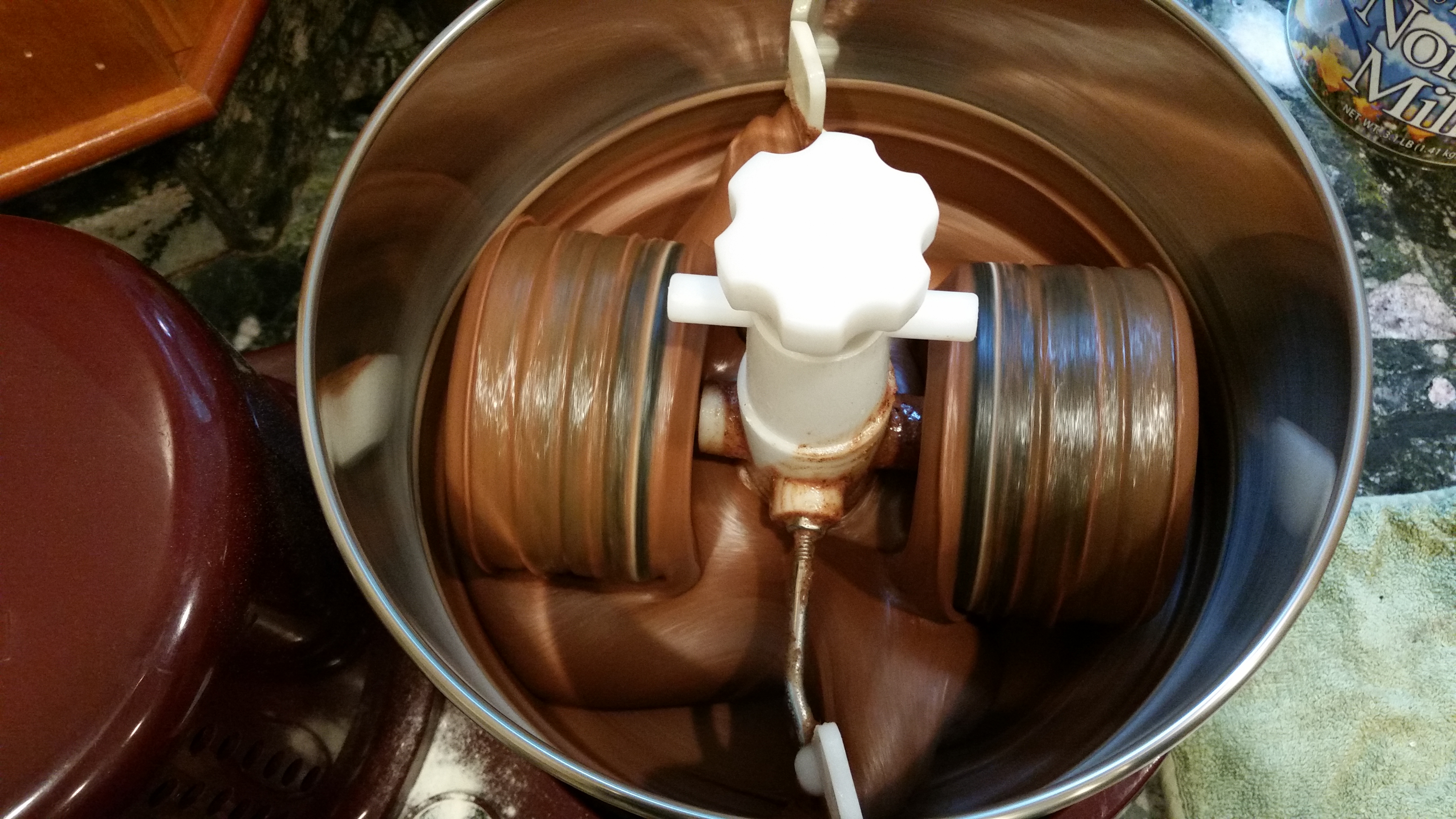Making Chocolate: 82% Cacao Forastero
I’m making chocolate again. Crisis has set in – I’m clean out of all the several test pounds made during the first quarter of this year. Nothing on hand to sweeten the evening’s edges.
This batch is number 7, finished this past weekend. It’s a deep, dark bittersweet 82% cacao. The 82% consists of 64% cacao (a Papua New Guinea Trinatario with Forastero flavors, and a Brazilian Free Trade Organic Forastero) with the balance in cocoa butter. I added extra cocoa butter this time compared to the first Forastero batch because that one was too thick and viscous a mouthfeel. I’m seeking a smoother, more melting chocolate.
The Forastero is the darkest and straightforward, simple chocolate flavored of all the strains of cacao bean. It’s what most of the world’s commercial chocolate is made from, and the dominant bean in most commercial blends. It has bitter, very recognizeable flavors, a smokey earthiness to it. It’s a good foundation chocolate to have on hand, and will contrast nicely as a shell around an exquisitely smooth, homemade buttercream cooked fondant used for filled chocolate creams, or as a base to blend with other varieties.
This time it feels like I’ve settled down to more of a repeatable process. That’s good because I’ll be faster, make fewer mistakes, with higher quality, now that I have a better sense of the parameters.
Here’s what I did to get that batch quickly into the melanger/concher.
- Chose the beans and weighed the raw beans: 33.8 oz.
- Roasted as one batch in the Behmor 1600 Plus. Took it to 267 degrees, then hit the cool cycle. Chances are it popped up to over 270. No matter, I didn’t even hear it start popping, but I could smell the nice chocolate aroma, so I was happy. Weighed post roast: lost .6 oz in water weight.
- Prepared the recipe spreadsheet, including target percentages. Using suganat sugar to incorporate the brown sugar flavor, Madagascar ground vanilla bean, and cocoa butter. Increasing cocoa butter to 17.7% (total 50% including what’s in the beans) to make it smoother and flow better for candy making.
- Set the oven to 150 degrees and popped in the Spectra melanger bowl and grinding wheels to warm them up while the rest was being prepared.
- Crushed the beans with the Crankenstein into a shallow stainless oval roasting pan.
- Set up my seat-of-the-pants winnower: a plastic tablecloth draped over the backs of two lawn chairs set at right angles to each other, dropping into a five gallon bucket. Then ran a hairdryer on high speed, blowing into the pan that was tilted towards and nearly over the edge of the bucket. Kept lifting the beans with a spoon. Took about 2 minutes to winnow nearly all the shells out.
- Weighed and calculated the loss for crush and winnow: 4.1 oz.
- Plugged the 29.1 oz nib weight into the recipe spreadsheet. I was targeting 85% cacao but ended up with 82% to keep costs under control.
- Weighed 8 oz suganat, 1 t. vanilla bean powder, and ground in the blender until very fine powder stage.
- Weighed 8 oz. cocoa butter into a Pyrex measuring cup and nuked it to melt: 4 min at 50% power. Stirred to get it pretty well melted.
- Put the nibs back in a skillet to warm them up, stirring. Checked the heat with a laser thermometer: about 130 degrees.
- Set up the melanger with bowl and wheels. Kept the tension nob on top barely screwed down. Poured in the melted cocoa butter, then started gradually adding bean nibs. Stopped when the grinder started to labor, let it grind down a bit, then started again, until all was added. Recorded the time in my notes.
Here’s a video snippet of getting started grinding batch 7. Sorry it’s so short and not well edited…I’m just getting started learning how to use video in my posts…and how to create these posts with my tablet…but it’s fun to see what chocolate looks like when it first goes in the stone grinder…



